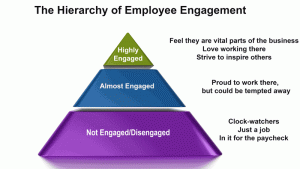What Blockchain Challenges Mean For Advertising
by Laurie Sullivan , Staff Writer @lauriesullivan, January 2, 2018
It’s easy to hear the enthusiasm in the voice of John Bates, director of product marketing at Adobe Analytics Cloud, when talking about blockchain technology. Blockchain technology aims to automated the entire media supply chain, from creatives to contracts. Bates spoke with Data & Programmatic Insider about some of the changes and challenges the advertising industry should expect to see in 2018.
Data & Programmatic Insider: What does blockchain mean for analytics, mobile and desktop?
John Bates: An opportunity to have new sources of data and information by tracking transactions that take place from machine to machine. For example, the type of blockchain interactions companies like IOTA measure and transact between internet of things devices. It also means an increase of privacy and transparency. The downstream effect is being able to create more personalized experiences.
D&PI: Why do you have this passion for blockchain technology?
Bates: To me it represents a new type of protocol, a new way for individuals to connect and have a higher degree of transparency through data. It’s an opportunity for companies to facilitate a higher level of efficiency.
I read an article about how UPS will take about 30 manual steps out of their supply chain and shipping processes using blockchain. I look at this and think about how to apply it to advertising and media to reduce click fraud, and how you could apply it to government and voting.
D&PI: Where are the inefficiencies in advertising blockchain can reduce other than click fraud?
Bates: Anywhere there’s a manual process. There are many inefficiencies in the media supply chain because it involves many manual processes across many companies and agencies.
We are far from thinking that blockchain will replace the entire process, from building the creatives to serving and monitoring the clicks on ads. That won’t happen anytime soon. I do think there are small pieces it can replace. One is on the outbound end, like monitoring the number of times a real person clicks on the ad because that has a real impact on attribution.
It all comes down to the network effect. Every company participating in the process must use the same technology.
D&PI: What are some of the challenges of automation?
Bates: There will be, especially in advertising, pushback from vendors in the media supply chain. In some cases automation will lead to companies not getting paid as much. That’s not going to be as big of a challenge as some of the others. Blockchain will open huge opportunities for companies to transact with others that have not done business together in the past, creating business challenges.
Another challenge is the applications of smart contracts. They are extremely innovative, but they’re not very forgiving. The smart contract guarantees the execution of predetermined terms. It resides on the blockchain. When those terms are met the actions are taken, but when they are not met they are not taken. Business decisions are not always black and white. If some term isn’t totally met, but there’s an intent to meet it, smart contracts will guarantee the execution or the termination of the agreement over an ad campaign.
Not having a forgiveness clause built into the smart contract, since it is automated, will be a challenge.
The entire company can run on a blockchain through a smart contract, because we’re talking about automation and artificial intelligence. There may not be much of a human interaction in the terms of execution of that deal. The degree to which a company is open to those types of relationships in the advertising world will impact adoption.
(52)
Report Post






